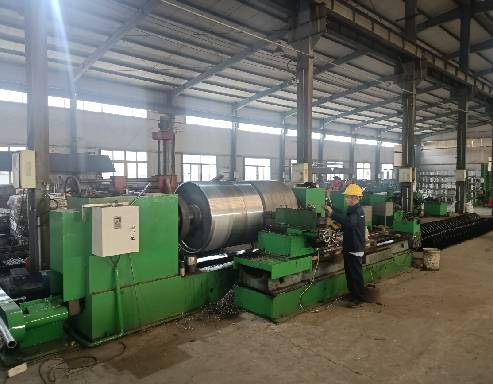 Afrikaans
Afrikaans  Albanian
Albanian  Amharic
Amharic  Arabic
Arabic  Armenian
Armenian  Azerbaijani
Azerbaijani  Basque
Basque  Belarusian
Belarusian  Bengali
Bengali  Bosnian
Bosnian  Bulgarian
Bulgarian  Catalan
Catalan  Cebuano
Cebuano  Corsican
Corsican  Croatian
Croatian  Czech
Czech  Danish
Danish  Dutch
Dutch  English
English  Esperanto
Esperanto  Estonian
Estonian  Finnish
Finnish  French
French  Frisian
Frisian  Galician
Galician  Georgian
Georgian  German
German  Greek
Greek  Gujarati
Gujarati  Haitian Creole
Haitian Creole  hausa
hausa  hawaiian
hawaiian  Hebrew
Hebrew  Hindi
Hindi  Miao
Miao  Hungarian
Hungarian  Icelandic
Icelandic  igbo
igbo  Indonesian
Indonesian  irish
irish  Italian
Italian  Japanese
Japanese  Javanese
Javanese  Kannada
Kannada  kazakh
kazakh  Khmer
Khmer  Rwandese
Rwandese  Korean
Korean  Kurdish
Kurdish  Kyrgyz
Kyrgyz  Lao
Lao  Latin
Latin  Latvian
Latvian  Lithuanian
Lithuanian  Luxembourgish
Luxembourgish  Macedonian
Macedonian  Malgashi
Malgashi  Malay
Malay  Malayalam
Malayalam  Maltese
Maltese  Maori
Maori  Marathi
Marathi  Mongolian
Mongolian  Myanmar
Myanmar  Nepali
Nepali  Norwegian
Norwegian  Norwegian
Norwegian  Occitan
Occitan  Pashto
Pashto  Persian
Persian  Polish
Polish  Portuguese
Portuguese  Punjabi
Punjabi  Romanian
Romanian  Russian
Russian  Samoan
Samoan  Scottish Gaelic
Scottish Gaelic  Serbian
Serbian  Sesotho
Sesotho  Shona
Shona  Sindhi
Sindhi  Sinhala
Sinhala  Slovak
Slovak  Slovenian
Slovenian  Somali
Somali  Spanish
Spanish  Sundanese
Sundanese  Swahili
Swahili  Swedish
Swedish  Tagalog
Tagalog  Tajik
Tajik  Tamil
Tamil  Tatar
Tatar  Telugu
Telugu  Thai
Thai  Turkish
Turkish  Turkmen
Turkmen  Ukrainian
Ukrainian  Urdu
Urdu  Uighur
Uighur  Uzbek
Uzbek  Vietnamese
Vietnamese  Welsh
Welsh  Bantu
Bantu  Yiddish
Yiddish  Yoruba
Yoruba  Zulu
Zulu Understanding the Functionality and Types of Industrial Conveyor Pulleys for Efficient Operations
Understanding Industrial Conveyor Pulleys Essential Components in Material Handling
In the realm of industrial manufacturing and logistics, conveyor systems play a pivotal role in ensuring the efficiency and reliability of material transport. At the heart of these systems are conveyor pulleys, which are crucial components for guiding and supporting conveyor belts. This article delves into the essential functions, types, applications, and maintenance considerations associated with industrial conveyor pulleys.
Functions of Conveyor Pulleys
Conveyor pulleys perform several vital functions within a conveyor system. They are responsible for the following key tasks
1. Belt Support Pulleys provide the necessary support for the conveyor belt, maintaining proper tension and alignment, which is critical for optimal performance. 2. Belt Drive The drive pulley, typically located at the head of the conveyor, drives the belt forward, allowing material to be transported from one point to another. 3. Deflection Return pulleys, found at the tail end, assist in directing the belt back to its starting position after material handling is complete. 4. Material Discharge Pulleys also help in discharging the materials being transported, ensuring that they are released at the correct point in the production line.
Types of Conveyor Pulleys
Conveyor pulleys come in various types, each designed for specific applications and functions
1. Drive Pulleys These are responsible for driving the conveyor belt and are often equipped with wear-resistant coatings to withstand friction. 2. Idler Pulleys Used to support the conveyor belt and improve its tracking, idler pulleys reduce wear and tear on both the belt and the pulleys themselves. 3. Tail Pulleys Located at the end of a conveyor, tail pulleys help return the belt to its idle position and are critical for maintaining belt tension. 4. Snub Pulleys These are utilized to increase the wrap of the belt around the drive pulley, enhancing friction and, consequently, the belt's ability to transport materials effectively. 5. Take-Up Pulleys Employed to adjust the tension on the conveyor belt, preventing slippage and ensuring smooth operation.
industrial conveyor pulleys

Applications of Conveyor Pulleys
Industrial conveyor pulleys are used across numerous sectors, from manufacturing and agriculture to mining and logistics. The versatility of conveyor systems, combined with pulleys, makes them integral to operations that involve bulk material handling. Some common applications include
- Mining Transporting mined materials over long distances, often in harsh environments that require heavy-duty pulleys. - Food Processing Supporting the movement of bulk food items while meeting health and safety regulations. - Automotive Streamlining assembly lines by efficiently moving components between workstations. - Warehouse Logistics Enhancing the efficiency of sorting and distributing products in distribution centers.
Maintenance Considerations
To ensure high performance and longevity, regular maintenance of conveyor pulleys is essential. This includes
- Inspection Periodic visual checks for signs of wear, misalignment, or damage. - Cleaning Regular cleaning to prevent the buildup of debris that could affect belt performance. - Lubrication Ensuring that bearings and moving parts are properly lubricated to minimize friction and extend lifespan. - Tension Checks Monitoring and adjusting the tension of the conveyor belt to prevent slippage and reduce the risk of damage.
Conclusion
In summary, conveyor pulleys are integral to the efficient functioning of industrial conveyor systems. Their diverse types and functions cater to a wide range of applications, making them invaluable in modern manufacturing and logistics. Understanding the importance of these components, along with proper maintenance practices, ensures that conveyor systems operate smoothly and efficiently, ultimately contributing to the productivity and profitability of industrial operations.
-
Trusted Conveyor Solutions from Leading Conveyor Idler Roller ManufacturersNewsJun.27,2025
-
Reliable Return Idler Solutions for Efficient Belt Conveyor SystemsNewsJun.27,2025
-
Precision Conveyor Accessories for Streamlined Material HandlingNewsJun.27,2025
-
High-Quality Belt Conveyor Idler Solutions for Efficient Material HandlingNewsJun.27,2025
-
High-Performance Belt Conveyor Pulleys for Reliable Material HandlingNewsJun.27,2025
-
Enhancing Material Handling EfficiencyNewsJun.27,2025





























